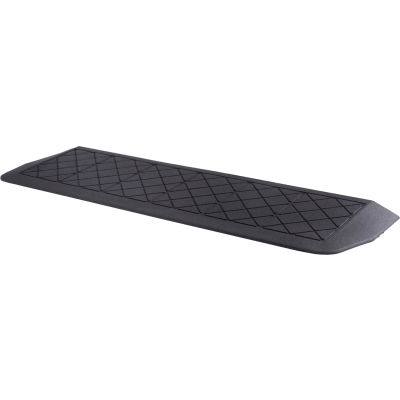
In such a condition, the blockage of tilled soil and the increase of tilling energy will be caused in field operation. (4) When the ratio of tilling depth to rotor radius was higher than 1.4, a large quantity of soil nearby the surface fell down to the bottom and was cut again in both direction of rotation. Therefore, the form of that portion was important to design the blade of less tilling energy. (3) In Japanes curved blade, most of tilling energy was consumed in the cutting by curved blade portion. (2) Tilling energy of up cut tilling was less than that of down cut, and this was much more evident when the ratio of tilling depth to rotor radius was higher. (1) In the case of down cut tilling, rotor radius smaller than tilling depth was favorable for deeper rotary tilling, because tilling energy was less, torque curve was smoother and reaction force was smaller and more upward in direction, hence pushing force to tractor will be smaller (Fig. The model tests on which soil blocks were tilled by rotary tiller with 2 blades were done to confirm the characteristics of energy, torque, horizontal and vertical forces in deeper rotary tilling, and the following results were obtained.

If the rate was too great or the dead zone of the tilling reaction force was set small, the system behaved unstable. Consequently, the tilling torque could be detected accurately by the tilling reaction force detector with torsion-bars.ģ) According to the digital simulation, the tilling torque fluctuation was small when the rate of the tilling depth change was set in the small range. In case of the experimental conditions, the change of the direction and the location of F 2 caused by the change of the tilling pitch and depth was comparatively small. The force F 2 which is equivalent to the average value of F 1 passed outside the rotating circle of the blade tip. The line of action of F 1 passed throuth inside the rotating circle of the blade tip, and the direction of F 1 was changed with the rotation of the blade. However by filtering the peak frequency, the detector was suitable as the input unit of the travelling speed and tilling depth control system.Ģ) The tilling reaction force ( F 1) not involving the thrust force acting on a blade was measured. It could be concluded through these comparisons that the theory formulated by the authors provides a guiding principle to predict the bearing capacity of plastic bodies such as soils, metals and so forth in the shape of truncated wedge.ġ) The gain of the tilling reaction force detector with torsion-bars had its peak frequency of 11Hz. e., for the small value of ω would be generally overestimated, because the theoretical values are calculated using the cohesion and the angle of internal friction prescribed by the maximum shear stress. The bearing capacity for the state including the wide plastic zone, i. These figures show that the theoretical curves approxi-mate over the whole trend of experimental values, except for the small alue of ω. The comparisons of the theory to experimental results are shown in Fig. The measured values of bearing capacity are shown in Table 2 in which φ is a half spreading angle of the wedge and ω is a ratio of the loading width ω to the top width W of materials. The cohesion and the angle of internal friction of the soil are 0.826kg/cm 2 and 14.28° respectively, while the physical properties are shown in Table 1. A mixed soil of sand and clay was used in the model test.

In this paper, the authors report as to the model tests carried out to verfy the applicability of the theory mentioned above. Then, the applicability of analytical solution to practical problems should be verified by experiments. The bearing capacity of the infinite body in the shape of a truncated wedge subjected to a single strip load was analyzed by use of slip-line method in the previous paper. In the problems such as the bearing capacity of farm soils or the indentation resistance of rigid punches to various machine elements, the width of loaded materials is not generally wide enough to be regarded as a semi-infinite body.


 0 kommentar(er)
0 kommentar(er)
